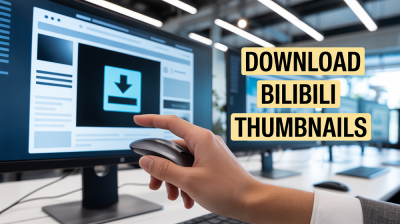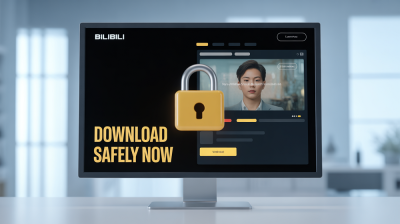In today’s digital age, having an online presence is almost as important as your resume itself. One of the most effective ways to showcase your professional persona is through your LinkedIn profile. But should you include your LinkedIn link on your resume? This question often pops up during job hunts, and the answer can significantly impact your chances of landing that dream job. Let’s dive into why you might want to make this addition.
Reasons to Include Your LinkedIn Profile
There are several compelling reasons to consider adding your LinkedIn profile to your resume. Here’s a breakdown of why this can be a smart move:
- Enhanced Professional Image: A well-crafted LinkedIn profile serves as a digital extension of your resume. It allows you to present a more detailed and visually engaging version of your professional history. Recruiters often appreciate seeing a polished online profile alongside your resume.
- Showcase Your Recommendations: LinkedIn is an excellent platform for gathering endorsements and recommendations from colleagues and clients. By including your profile, potential employers can read firsthand accounts of your skills and work ethic, adding credibility to your application.
- Networking Opportunities: By sharing your LinkedIn profile, you're not just giving recruiters your work history; you're inviting them to connect professionally. This can open doors for networking opportunities that might lead to job offers or valuable industry connections.
- Keep Your Information Up-to-Date: Unlike a static resume, your LinkedIn profile can be updated in real-time. Including it on your resume means that employers can see your most recent achievements, skills, and experiences without waiting for a complete resume overhaul.
- Highlight Relevant Skills and Projects: Your LinkedIn profile allows for a more comprehensive display of your skills, projects, and certifications. This can be particularly useful in fields where specific skills are in high demand, making it easier for recruiters to see your qualifications at a glance.
3. Potential Drawbacks of Including Your LinkedIn Profile
While adding your LinkedIn profile to your resume can enhance your professional presence, it’s not without its pitfalls. Here are some potential drawbacks to consider:
- Inconsistent Information: If your LinkedIn profile doesn’t match the details on your resume, it can raise red flags for hiring managers. Ensure that your job titles, dates, and responsibilities are identical on both platforms.
- Privacy Concerns: By linking your profile, you're inviting employers to explore more about you. If your LinkedIn contains personal information or recommendations that don't align with the professional image you're trying to convey, it might backfire.
- Overemphasis on Online Presence: Some employers may prefer traditional resumes. A strong resume can stand on its own and may not need an online supplement. Relying too much on your LinkedIn might detract from the tangible skills and experiences presented in your resume.
- Outdated Content: If you haven’t updated your LinkedIn profile recently, it may present outdated information or accomplishments. This inconsistency can harm your credibility.
- Link Rot: Sometimes, hyperlinks can break or lead to incorrect pages. If your LinkedIn isn’t easily accessible due to a broken link, it can leave a bad impression.
4. How to Effectively Link Your LinkedIn Profile
Linking your LinkedIn profile on your resume is about more than just copying and pasting a URL. Here’s how to do it effectively:
- Customize Your LinkedIn URL: Instead of using the default, lengthy URL, personalize it. This not only looks cleaner but also makes it easier for recruiters to find you. You can do this in your LinkedIn settings.
- Placement Matters: Include your LinkedIn link in your contact information section at the top of your resume. This makes it easy for employers to find without searching through the entire document.
- Use a Call-to-Action: Consider adding a brief note like “Visit my LinkedIn for more details” next to the link. This encourages employers to check it out without assuming they should.
- Ensure Mobile Compatibility: Many recruiters review resumes on mobile devices. Make sure your LinkedIn profile is mobile-friendly and displays well on smaller screens.
- Keep Your Profile Updated: Regularly update your LinkedIn with new skills, endorsements, and experiences. This ensures that what employers see is current and relevant.
By linking your LinkedIn profile thoughtfully, you can enhance your resume’s impact and provide employers with a comprehensive view of your professional journey.
Should You Include Your LinkedIn Profile on Your Resume?
In today's digital age, having a strong online presence is crucial for job seekers. One of the most important aspects of this presence is your LinkedIn profile. Here are some compelling reasons to consider including your LinkedIn profile on your resume:
- Visual Showcase of Your Experience: LinkedIn allows you to present your work history, skills, and endorsements in a visually appealing format that can complement your resume.
- Networking Opportunities: Including your LinkedIn profile can open doors to networking possibilities with recruiters and industry professionals.
- Additional Information: Your LinkedIn profile can house recommendations, projects, and articles that may not fit on your resume but enhance your candidacy.
- Demonstrates Professionalism: A well-maintained LinkedIn profile signifies that you are proactive about your career and serious about your professional image.
However, there are a few considerations to keep in mind:
| Pros | Cons |
|---|---|
| Enhances your personal brand | Profile must be kept updated |
| Provides more context to your resume | May lead to scrutiny of online presence |
In conclusion, including your LinkedIn profile on your resume can be a strategic move, provided that your profile is polished and reflects your professional brand effectively.










